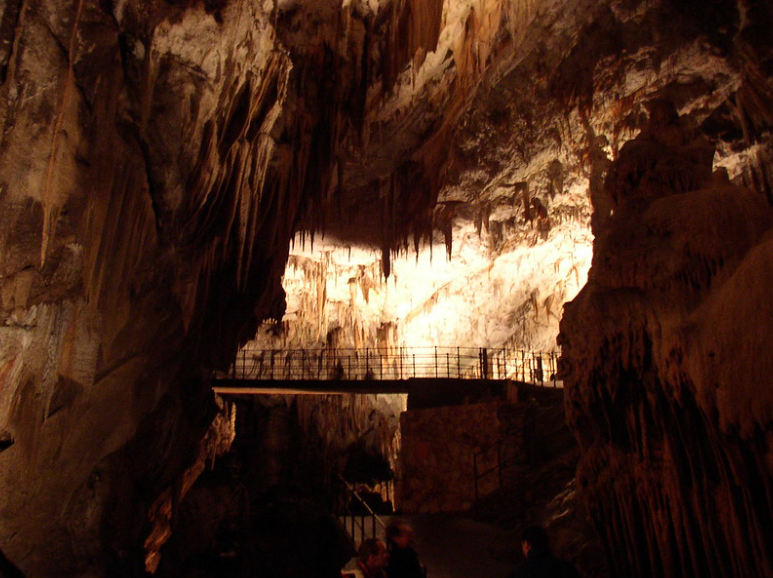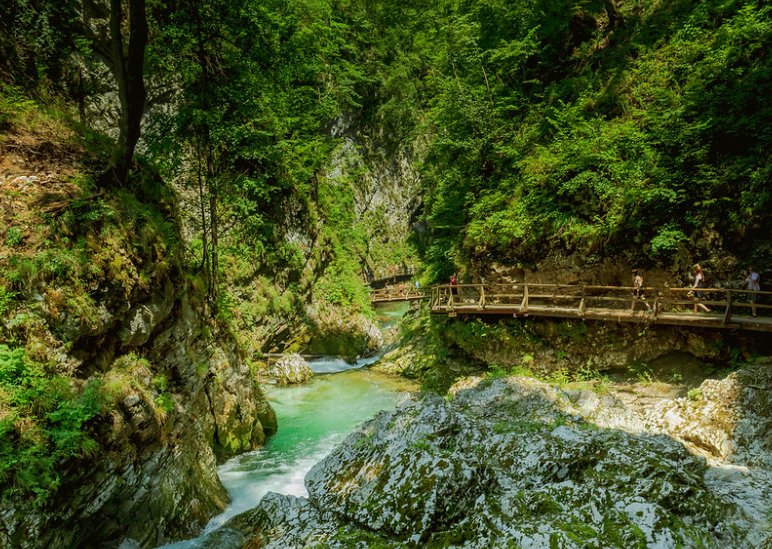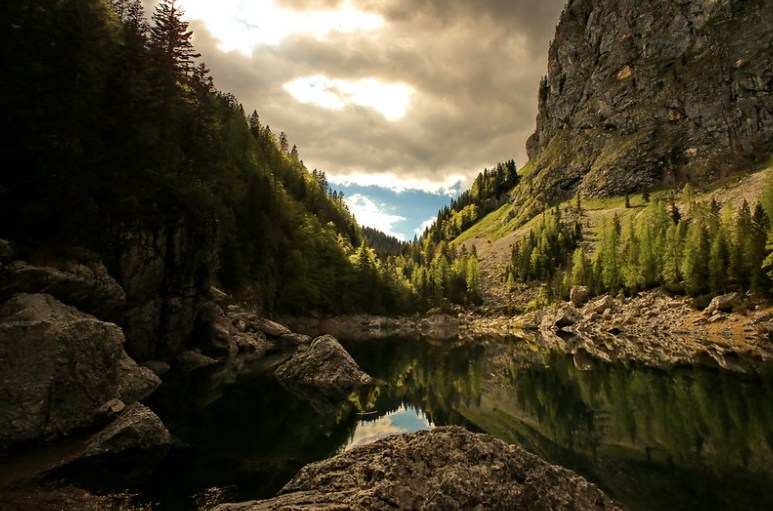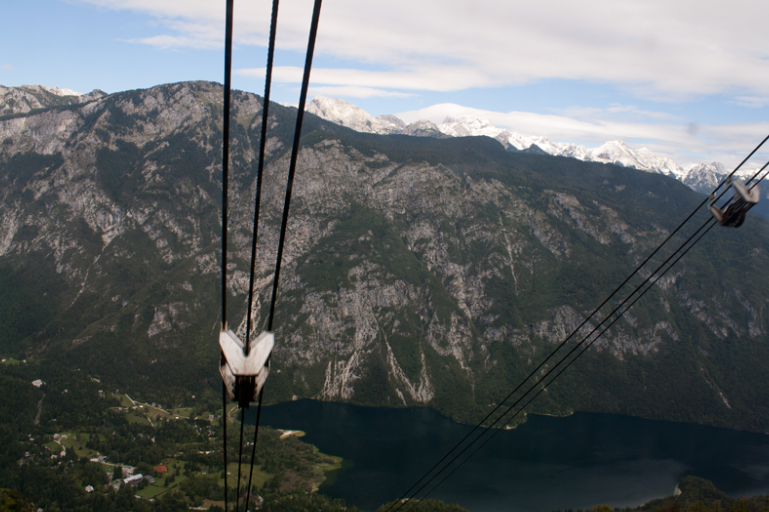This captivating yet unfamiliar country in the east of Europe is a hub of culture and nature—harboring mountains, lakes and castles.
Bled Lake, Slovenia. Mirci. CC by 2.0
Although a lesser-known European country, Slovenia possesses many natural landscapes and beautiful scenery. Originally, the nation’s current shape was established in 1945 as part of Yugoslavia, but Slovenia won its independence in 1991. It is bordered by four countries—Austria to the north, Italy to the west, Hungary to the northeast and Croatia to the south. Slovenia also shares a coastline with the Adriatic Sea, along with mountain ranges like the Julian Alps and the Karavanke Alps. This variety of landscape is a traveler’s dream, because of the different environments one can experience. The most notable of Slovenia’s must-do adventures include cave exploring, mountain hiking, castle tours and lake excursions.
1. Postojna's Extensive Cave System
Postojna Cave. Shadowgate. CC by 2.0.
Postojna’s Cave System, located in the south of Slovenia and near its capital Ljubljana, is a subterranean wonder that enraptures its visitors with its otherworldly beauty. Being one of the most extensive cave systems in the world, it is a 15 mile cave system easily accessed by both Croatia and Italy, featuring passages, cavernous chambers, stone sculptures and interesting rock formations. Postojna’s cave system tends to be the most popular and friendly, particularly because of the alluring activities that it offers. Visitors can explore underground via a train that travels all the way throughout the entire system and gives views of breathtaking stalactites and other geological configurations. The natural attraction has received major attention ever since it opened in 1819, since reaching a total of 34 million visitors.
2. Predjama Castle Tours
Predjama Castle in Winter. Shadowgate. CC by 2.0.
Predjama Castle, perched dramatically on a cliff in the picturesque Slovenian countryside, is a medieval marvel that combines architectural ingenuity with a captivating history. Predjama Castle is actually buried into the side of the Postojna’s cave system, so both excursions combine very efficiently together in a day’s worth of experiences. The tours emphasize the medieval past of knightly honor and architectural accomplishment, even describing the enriching culture of daily life in the context of the castle’s history. Legends are also told regarding some of the castle’s inhabitants, such as the knight Erazem Lueger, prized for his exploits during the Habsburgs’ sieges of the castle. Cave tunnels used as a hiding place or secret transportation extend behind and below the castle into the cave system. A usual visit, with all of the tour time included, lasts around one to two hours.
3. Vintgar Gorge's Mountain Bridges
Walking in Vintgar Gorge. Wuestenigel. CC by 2.0.
The boardwalks of the Vintgar Gorge are a natural masterpiece with its pristine beauty and gorgeous sight of the Radovna River. Carved through the vertical rocks of the Hom and Borst hills, the gorge extends for 1 mile, offering a spectacular display of nature's forces. The highlight of the gorge is the breathtaking Sum Waterfall. The experience of walking along wooden walkways and bridges that traverse the gorge provides an intimate connection with the surrounding nature, revealing moss-covered cliffs, lush vegetation and the soothing sounds of rushing water. Because of these attributes, Vintgar Gorge has been ranked among the most important sights in Slovenia. It’s also extremely easy to get to, located three miles northwest of Lake Bled. However, this excursion can last up to two or three hours because of the length and complexity of the bridge paths, so the visitor should be committed to this beautiful yet time-consuming trek.
4. Triglav National Park's Hiking Trails
Triglav National Park, Slovenia. Boris Kuznetsov. CC by 2.0.
One of the most important activities a traveler could take part in is visiting Triglav National Park, located in the Julian Alps. Named after the country's highest peak, Mount Triglav, this national park spans over 522 square miles and includes a diverse range of landscapes, including rugged mountains, alpine meadows, crystal-clear lakes and dense forests. The park is also a haven for outdoor enthusiasts, offering a network of well-maintained hiking trails of various difficulty levels that lead to glacial valleys and serene lakes such as Lake Bohinj. Triglav National Park also boasts a rich biodiversity for both flora and fauna, being home to approximately 7,000 species of animals and 1,600 species of plants. Lastly, for travelers that crave the most intense and challenging adventure, they can hike to the top of Mount Triglav itself. However, this comes with the added protection of climbing gear and a guide, so there are extra requirements.
5. Vogel Cable Cars at Lake Bohinj
Vogel Cable Car. Delaina Haslam. CC by 2.0.
If the Julian Alps are the central fixation of the trip, then the Vogel Cable Cars at Lake Bohinj are a recommended event. They offer a breathtaking and convenient ascent into the heart of the Julian Alps, providing visitors with panoramic views. These cars begin at the lower station of Lake Bohinj with stunning views of the lake itself, but more series of cable car lines also transport passengers from the valley floor to the summit of Mount Vogel, where a high elevation unveils a spectacular landscape. The Vogel Cable Cars also offer an immersive experience of traditional Slovenian food because of the several mountain chalets and restaurants available. A visit here can last up to three hours if all of the lines are explored, and as little as one hour if a person only desires lakeside views. Lake Bohinj itself boasts a scenic and peaceful experience with activities like paddleboarding, swimming and hiking. During the winter months, the Julian Alps are a popular destination for world-class skiing and snowboarding, and the cable cars have access to the Vogel Ski Resort.
Riley Baker
Riley is a first-year student at James Madison University majoring in Writing, Rhetoric, and Technical Communication. She enjoys elements of storytelling and creative writing and likes listening to music. In addition, she is interested in journalistic-style writing and editing, and intends to focus on writing articles about lesser known travel locations and impactful world topics.







